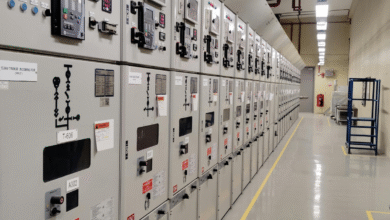
Imagine you’re running a manufacturing plant and suddenly demand for one appliance model spikes, while another slows down overnight. In a traditional setup, rigid assembly lines often struggle to keep up, resulting in costly downtime, retooling, and delays in getting products out the door.
Now picture a flexible line that can pivot quickly, switch tasks, and adapt without major interruptions. This isn’t a futuristic scenario; it’s already reality for manufacturers who have embraced adaptability.
Flexibility isn’t just a nice-to-have; it’s becoming the difference between keeping pace with demand and falling behind. SanHok, the leading home appliances assembly line and conveyor manufacturer in China, has seen firsthand how flexibility shapes growth.
What on earth is a flexible line?
In simple terms, a flexible assembly line is a production setup that can shift gears almost instantly. These lines are not tied to produce a single product at a time but many different models or variations with only minor modifications.
Modular automation enables manufacturers to add or remove stations on demand and smart tooling can be repurposed to new tasks within a short period. Combine this with adaptable robotics, and you already have a system that can transition from assembling ovens in the morning to dishwashers in the afternoon without any inconvenience.
Such transitions are assisted by companies such as SanHok, which provides systems capable of keeping up with the volatile markets.
Why you’ll care (and probably already should)
Here’s why this isn’t just cool tech, but a game-changer for scaling. Appliance makers today face constant pressure to balance production with unpredictable consumer demand. One week it might be refrigerators flying off the shelves, the next it’s microwaves.
Traditional rigid lines simply aren’t built to handle that kind of rapid change. Flexible assembly lines, on the other hand, give manufacturers the ability to rebalance production in real time. That means switching product mixes without long downtimes, keeping inventory in check, and responding to market shifts almost as they happen.
For companies looking to scale, this agility is critical. Instead of pouring resources into multiple specialized lines, businesses can maximize output from fewer, smarter setups. SanHok builds equipment with this exact purpose in mind, helping appliance makers respond faster and more competitively.
More products with less hassle in small runs
Think of it as doing more with less fuss. Flexible assembly lines shine in small-batch production, where traditional setups often fall short. Modular systems enable machines to run continuously with the quick adaptation, instead of closing down to retool to run a small batch.
This makes it easier to test new product variations, launch seasonal models, or meet niche customer requests without draining resources. The fact that it is possible to create smaller volumes in accuracy also plays a part in keeping down production, as the manufacturers do not have to overproduce to clear the entire line.
As the consumer demand moves toward customization and variety, small-batch efficiency is taking on an equivalent importance as high-volume production. SanHok has remained innovative in this area and provides solutions that enable manufacturers to diversify without getting bloated.
The magic behind making it flexible
Here’s how it actually gets done. Flexible assembly lines rely on mobile, easy-program robots that can be deployed wherever they’re needed, without permanent fences or heavy infrastructure. That means tasks can shift quickly, and manufacturers don’t have to commit to one rigid setup. Now add in intelligent tooling and modular automation, and the advantage is compounded.
Computer vision can also be used to locate and fit parts precisely and scalable stations can be easily reconfigured to match the product in use on a single day. Add to that, there is the additional flexibility of adaptive machines and collaborative robots, or cobots.
These systems are capable of self-adjusting to various work and co-exist with people in a safe and non-threatening manner and increase the speed and safety of the floor. Collectively, these technologies are the keystone to flexible manufacturing, allowing appliance makers a means to remain productive, responsive, and prepared to whatever the market throws their way.
Why this isn’t just about speed
It’s not just efficiency, it’s about staying relevant. Flexible assembly lines deliver more than quicker changeovers; they improve quality and reduce waste by supporting lean practices. With smarter systems, there are less error, tighter processes and more efficient use of resources.
They also enhance nimbleness hence enabling the manufacturers to react to the sudden changes in consumer preference or launch new models without causing a significant change in the operations. And now with cheaper and easier access to automation, even small and mid-sized manufacturers can benefit.
It means that the flexibility becomes not so much of a luxury as an absolute requirement, a plan on how to make production more future-proof and stay competitive in the industry where stagnation often leads to loss of positions. In the case of SanHok, this philosophy motivates the solutions it offers to customers all over the world.
Ready to scale smarter?
You’ve seen the why and the how, now imagine what it could do for your own line. Flexible assembly systems do not simply refer to faster changeovers, but to scale-on command, respond to changing demand, and maintain high quality without increasing costs. To the appliance manufacturers, it is an expansion without having to experience the threat of bottlenecks, or outmoded configurations. The conclusion is evident: the future-ready production is based on flexibility. What is more important is, is your production line flexible today? SanHok is prepared to assist the manufacturers experiment with the future.













